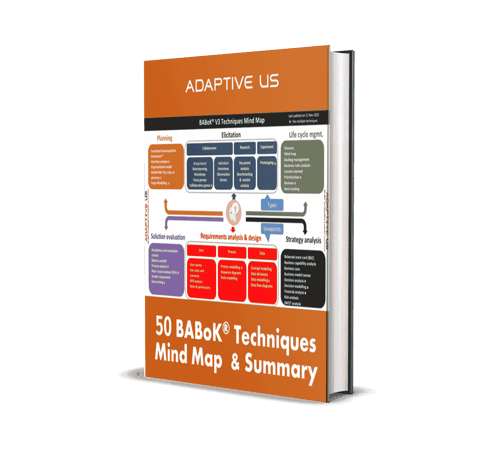Welcome to our comprehensive guide on one of the most valuable tools in a business analyst's toolkit - sequence diagrams! As a business analysis technique, sequence diagrams visually represent the interactions between different components or actors within a system. They help understand complex processes and are crucial for effective communication and problem-solving. This blog post will delve deep into sequence diagrams, exploring their history, components, types of messages, advantages, limitations, and more. So grab your virtual pen and paper as we embark on this enlightening journey together!
What are sequence diagrams?

Sequence diagrams are a powerful visual tool used in business analysis to represent interactions between different components or actors within a system. They provide a step-by-step depiction of how these entities communicate and collaborate, helping analysts better understand complex processes.
At their core, sequence diagrams showcase the chronological order in which actions occur within a system. Each component or actor is represented by a vertical line called a lifeline, and arrows indicate messages exchanged between them. These messages can be simple method calls, signals, or asynchronous communications.
Using sequence diagrams, business analysts can effectively capture and document critical information about how various elements interact and contribute to achieving specific objectives. This enables stakeholders to gain insights into process flows, identify bottlenecks or areas for improvement, and make informed decisions based on concrete evidence.
Furthermore, sequence diagrams are an essential communication tool among team members working on complex projects. They provide clarity and alignment by visually representing the expected behavior of different components executing certain tasks or functionalities.
Sequence diagrams offer an intuitive way to visualize complex interactions within systems. Whether you're analyzing existing processes or designing new ones from scratch, incorporating this technique into your business analysis toolkit can greatly enhance your ability to understand and optimize workflows efficiently. So, let's dive deeper into this fascinating technique!
History of Sequence Diagrams
Sequence diagrams have a rich history as a valuable business analysis technique. They were first introduced in the early 1990s by two software engineers, Ivar Jacobson and James Rumbaugh, as part of the Unified Modeling Language (UML). This modeling language aimed to provide a standardized way to visualize and document complex systems.
Initially, sequence diagrams were primarily used in software development projects to depict the interactions between objects or components within a system. However, their usefulness quickly extended beyond just programming. Business analysts recognized the power of sequence diagrams in understanding and communicating business processes.
The need for effective stakeholder communication grew as businesses became more reliant on technology and interconnected systems. Sequence diagrams emerged as an essential tool for capturing and illustrating these intricate interactions.
Business analysts began utilizing sequence diagrams to map how different entities – users, systems, or external services – interact over time. Analysts could identify potential bottlenecks or dependencies that might impact system performance or efficiency by visually representing these interactions through lifelines (represented by vertical lines) and messages (represented by arrows).
Moreover, sequence diagrams enabled business analysts to accurately identify any missing or redundant steps in a process flow. They provided insights into how data was exchanged between various actors within a system during specific scenarios or use cases.
Over time, this analytical technique has evolved with technological advancements and tools specifically designed for rapidly creating sequence diagrams. Today's modern diagramming tools offer drag-and-drop functionality, and automatic layout features that streamline the process of creating clear and concise sequence diagrams.
In conclusion, the history of sequence diagrams showcases their evolution from being solely utilized in software development projects to becoming an invaluable technique for business analysts worldwide.
How can business analysts use sequence diagrams?
Business analysts play a crucial role in understanding and improving business processes. One technique they can use to analyze and document these processes is sequence diagrams. These diagrams visually represent the interactions between different objects or components within a system.
By using sequence diagrams, business analysts can gain valuable insights into how various entities communicate with each other during the execution of a particular process or workflow. This allows them to identify potential bottlenecks, inefficiencies, or areas for improvement.
Sequence diagrams are handy when analyzing complex scenarios involving multiple actors and interactions. They help capture the flow of events, including the order and timing of messages exchanged between different components.
Furthermore, these diagrams act as an effective communication tool between stakeholders by clearly showing how different parts of a system interact with each other. This helps bridge the gap between technical teams and non-technical stakeholders by presenting information in an easily understandable format.
In addition to their analytical value, sequence diagrams also serve as documentation artifacts that can be used for future reference or training purposes. They capture essential details about message flows, dependencies, and constraints within a system's architecture.
Sequence diagrams enable business analysts to better understand complex systems' behaviors while facilitating effective stakeholder communication. Their ability to visualize interactions makes them an invaluable tool throughout various stages of analysis and design processes
Components of a Sequence diagram
A sequence diagram is a powerful tool for business analysts to represent the interaction between different entities in a system visually. It helps to capture the flow of messages and actions during a particular process or scenario. To create an effective sequence diagram, it is crucial to understand its key components.
- Actors: Actors are external entities interacting with the analyzed system. They can be individuals, other systems, or even hardware devices.
- Lifelines: Lifelines represent the various objects or entities within the system participating in the sequence of events. Each lifeline corresponds to a specific actor or component.
- Messages: Messages depict communication between actors and lifelines. They can be simple calls or complex interactions involving parameters, return values, and loops.
- Activation boxes: Activation boxes show when an object actively processes a message and indicate its duration through vertical lines on the lifeline.
- Constraints: Constraints specify preconditions and post-conditions for messages, ensuring certain conditions are met before they can be executed.
- Fragments: Fragments define alternative paths within a sequence diagram based on conditions like loops, optional activities, or parallel executions.
- Notes: Notes provide additional information about specific elements in the diagram, helping clarify any ambiguities or providing context where needed.
By understanding these components and their relationships within a sequence diagram, business analysts can effectively analyze and communicate complex processes in a visual manner that stakeholders can easily comprehend.
Types of messages in a sequence diagram
When creating a sequence diagram, understanding the different types of messages is crucial for business analysts. These messages represent the interactions between objects and help depict the flow of communication within a system.
- Synchronous Messages: This type of message indicates that the sender object will wait for a response from the receiver object before proceeding further. It represents a direct and immediate interaction between objects.
- Asynchronous Messages: Unlike synchronous messages, asynchronous messages do not require an immediate response from the receiver object. The sender object can continue its execution without waiting for feedback or acknowledgment.
- Return Messages: Return messages are used when an object successfully executes an operation and needs to send back some information or value to the calling object.
- Create Messages: Create messages show the creation of new instances or objects within a system.
- Destroy Messages: On the other hand, destroy messages indicate that an instance or object is being deleted or removed from memory.
- Self-Message: A self-message occurs when an object sends a message to itself, representing internal processing or decision-making within that specific object.
By utilizing these different types of messages, business analysts can effectively capture and visualize complex interactions in their sequence diagrams, providing valuable insights into how various components communicate in a system.
Advantages of a Sequence Diagram
Sequence diagrams have become an invaluable tool for business analysts to understand and document complex systems. These diagrams offer a visual representation of the interactions between different components or objects within a system, making it easier to analyze and communicate how these interactions occur.
One key advantage of sequence diagrams is their ability to capture the dynamic nature of a system. By depicting the flow of messages between objects over time, analysts can gain insights into the order in which actions occur and identify potential bottlenecks or inefficiencies.
Another advantage is that sequence diagrams help stakeholders visualize complex processes. Instead of relying on lengthy textual descriptions, businesses can use these diagrams to provide clear and concise representations that are easy to comprehend. This helps ensure everyone involved has a shared understanding of how the system functions.
Additionally, sequence diagrams facilitate collaboration among team members by providing a common language for discussing system behaviors. With all stakeholders using the same visual representation, it becomes easier to identify misunderstandings or gaps in knowledge early on and work towards resolving them.
Moreover, sequence diagrams allow business analysts to identify opportunities for optimization or improvement within a system. Analysts can pinpoint areas where delays may occur, or unnecessary steps could be eliminated by examining the order and timing of messages exchanged between components.
This diagram also serves as valuable documentation artifacts that can be referred back to throughout the project lifecycle. They act as a reference point for developers when implementing code changes or adding new features since they provide insights into how different parts of the system interact.
Limitations of a Sequence Diagram
While sequence diagrams are a valuable tool for business analysts, it's important to acknowledge their limitations. Understanding these limitations can help you make the most effective use of this technique.
One limitation is that sequence diagrams focus on the order and flow of messages between objects in a system. They do not provide details about each object's internal workings or logic. You may need to supplement your analysis with other techniques if you want to understand complex algorithms or specific implementation details.
Another limitation is that sequence diagrams can become overly complex when representing large systems with many interacting objects. In such cases, the diagram can quickly become cluttered and difficult to interpret. It's crucial to balance including enough detail to accurately represent the system's behavior while keeping the diagram clean and understandable.
Additionally, sequence diagrams may not capture all possible scenarios or edge cases within a system. They typically focus on illustrating typical interactions and may overlook less common scenarios that could still impact system behavior.
Sequence diagrams are often used as an initial design or communication tool rather than a detailed documentation artifact. While they provide insights into how objects interact at runtime, they might not capture all aspects of static relationships between objects or class structures.
Despite these limitations, don't discount the value of using sequence diagrams as part of your business analysis toolkit! When used appropriately and with other techniques, they can provide valuable insights into system behavior and improve stakeholder communication.
Worked out Example:
Governance, Risk, and Compliance (GRC) management system is developed for the IT and ITES domains. The primary goal of the GRC management system is to help companies implement Governance, Quality, and Information Security Management Systems in an integrated manner. It has features for planning and tracking projects and programs using standards such as CMMI, ISO 9001, ISO 27001, etc.
With this example, let us try to understand the sequence diagram for the “Search schedule” use case of the schedule management module of the Governance, Risk, and Compliance (GRC) management system.

Main Scenario:
The Project Manager specifies a milestone name on the search page and then presses the search button. The system validates the PM’s search criteria. If the milestone name is entered, the system searches the schedule list and displays the search results on the search results page when the search is complete.
Alternate Scenario:
The system displays an error message if the PM does not enter the milestone name before pressing the search button.
In this example, the Search Page, Search Results Page, etc. are objects. A lifeline is drawn as a dashed line and represents the lifespan of an object. The period during which an operation is executed is shown as an activation box, which is the rectangle below the lifeline. Messages are interactions between two objects, represented in the form of arrows.
Thus, a sequence diagram shows how processes or objects interact during a scenario. It provides a visual representation of the interactions between objects.
Conclusion
Sequence diagrams are a valuable tool for business analysts in business analysis techniques. They visually represent the interactions between different components and actors within a system, allowing analysts to understand how processes flow and communicate.
Using sequence diagrams, business analysts can clearly illustrate complex scenarios, identify potential bottlenecks or inefficiencies in a system, and collaborate effectively with stakeholders to discuss and refine requirements.
The history of sequence diagrams showcases their evolution as an essential technique in business analysis. From UML's introduction to its widespread adoption across industries, these diagrams have proven useful in capturing and communicating intricate system behaviors.
When creating sequence diagrams, business analysts need to include key components such as actors, objects/classes, lifelines, messages (including synchronous and asynchronous), conditions/loops/branches (if required), and focus of control indicators like activation bars or gates. These elements work together to depict the dynamic interactions within a system accurately.
While there are some limitations to using sequence diagrams - such as oversimplification of complex systems or difficulty representing real-time constraints - they still offer immense value when used appropriately. Business analysts should be mindful not to rely solely on this technique but to complement it with other tools and methods available in their toolkits.
Mastering effective sequence diagrams can greatly enhance a business analyst's ability to analyze systems efficiently. It enables them to bridge communication gaps between stakeholders by presenting information visually while illustrating how various components interact.
So embrace the power of sequence diagrams as part of your arsenal! Incorporate them into your analysis toolbox today and watch your effectiveness soar as you uncover insights that drive successful outcomes for organizations.
You May Also Like
These Related Stories

Comparing Key Decision-Making Techniques

BCS vs IIBA: Understanding the certifications for Business Analysts



No Comments Yet
Let us know what you think